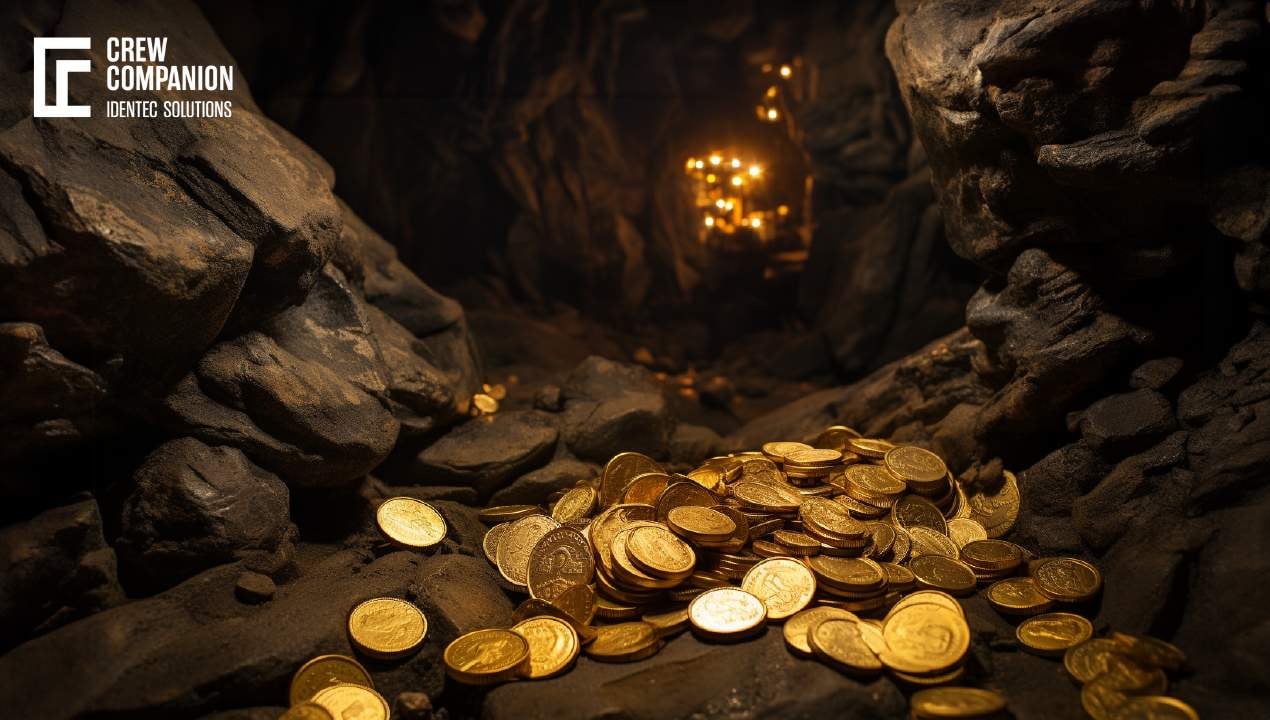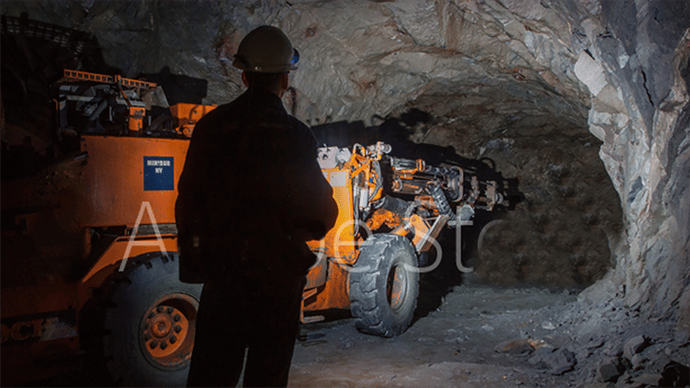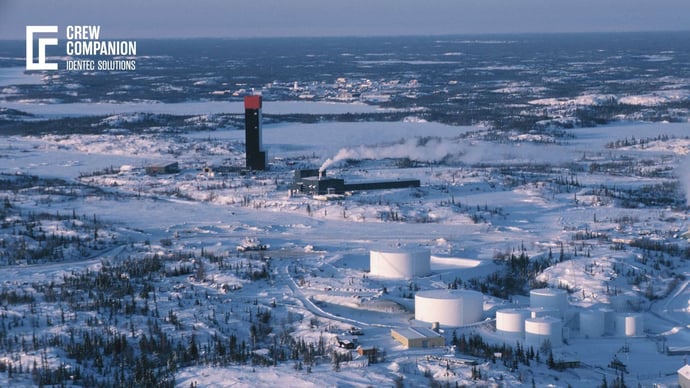Productivity in Mining Increased
| Written by Michal Wozniakowski-Zehenter

No video selected
Select a video type in the sidebar.
Adopt Automation and Robotics
Worldwide mining operations are 28% less productive today than a decade ago. Declining ore grades, increasing costs, shortage of skilled labour, market volatility and stringent regulatory compliance have been driving the mining industry to look for ways to improve productivity and efficiency.
Across multiple functions in the mining industry, business processes span a wide variety of rule-based and knowledge-based repetitive work that does not add any value to the core business or to the end users doing it. You know, automation can lead to a substantial increase in productivity. But how?
By integrating advanced technologies such as artificial intelligence and machine learning, the potential for efficiency and output is limitless. Machines, free from fatigue and the need for breaks, work tirelessly around the clock, ensuring a constant and uninterrupted flow of production. Automated trucks, drills, and even robotic machinery revolutionize the extraction and transportation of minerals by providing consistent and precise operations. These cutting-edge technologies not only enhance productivity but also minimize human error and improve overall safety in the mining industry.
How does REAL-TIME DATA affect productivity in mining?
Throughout the years, mining operations grew significantly. Now, they are big and complex. Real-time data gives a quick picture of everything that’s going on in the mine. Just by clicking a button, a boss can see detailed information about machines, workers, and mineral outputs and make quick decisions that can save time, resources, and lives. Advanced monitoring systems, which are present in most of today's mines, do more than just collect data. They can predict problems like equipment failure or safety risks before they happen. This helps mining companies deal with issues before they become bigger problems.
Sensors and devices in the mines can collect lots of different information - from measuring the temperature of a machine and checking the quality of a mineral sample to monitoring the air quality in a certain area. This gives a complete view of every part of the mining operation. With real-time data, mine managers can make fast and informed decisions. They don’t have to rely on old reports or guesses. Making quick and smart decisions can keep the mining operations running smoothly and avoid big problems (see also: Mining digital transformation).
WORKFORCE SKILLS
In mining, the skills and knowledge of the workforce are really important for success. Keeping the training programs ongoing and updated is not just a routine task but a smart investment. Regular and updated training helps workers stay aware of the newest skills, technologies, and good ways to do things. Training that goes into detail on special topics like advanced mapping, up-to-date equipment care, and strong safety steps make sure the workforce is ready and confident to handle complex machines and unexpected problems.
Also, in times when being efficient makes a big difference in profits, mining operations need to work on making their processes better. Using lean principles, which come from manufacturing areas, is a good way to do this. Lean mining focuses on finding and getting rid of any steps that don’t really add value to the mining work. This is about making processes simpler, cutting down unnecessary waits, and making sure that both people and materials are used in the best way possible.
By using these focused methods, mining companies can really cut down on waste in terms of time, resources, and effort. The effect of these changes means more productivity, cost-saving, and having an edge in the busy mining field. In the end, a well-trained team and simple, efficient processes are the two main supports of a ready and strong mining operation.
Learn more about: the mining workforce of tomorrow
Why are Sustainable Practices in Mining essential?
Today, sustainability is a necessity rather than an option in a world that is environmentally conscious. Mining companies can reduce their environmental impact and improve their operational efficiency by adopting sustainable practices. Using smart water management systems allows you to maximize water usage by utilizing only what is needed and minimizing water waste. Sustainable practices can benefit mining companies in addition to benefiting the environment and strengthening their reputation as responsible corporate citizens.
Using global data from the U.S. Geological Survey (USGS) and WRI’s Aqueduct tool, researchers found that at least 16% of the world’s land-based critical mineral mines, deposits, and districts are situated in regions already experiencing high or extremely high water stress. These areas face significant competition for water among agriculture, industry, and households, often consuming most or all available freshwater resources. Without effective management, mining for critical minerals can be highly water-intensive and contribute to pollution, exacerbating existing water shortages. Sustainable water use strategies are essential to prevent further depletion and ensure the long-term viability of mining operations. (2)
Developing strong relationships with local communities is beneficial not only for mining operations, but also for mining companies and their employees in building mutual trust and support. Mining companies can increase mining productivity and reduce turnover rates by employing a stable workforce who understands the culture and dynamics of these communities (see also: responsible mining).
GOING GREEN
Reusing renewable energy in mining has the potential to revolutionize operations in remote areas. Traditional energy sources are often scarce or prohibitively expensive to transport to these locations. Mining companies can utilize the abundant natural resources available in these regions by using solar panels, wind turbines, or other renewable technologies.
A mining company's ability to withstand fluctuations in energy prices is enhanced by the implementation of renewable energy solutions. The price of fossil fuels will rise as the world becomes more aware that they are finite resources. Mineral operations can protect themselves from fossil fuel volatility by investing in renewable technologies.
MOVING THIngS
Efficient transportation of mined materials is crucial for maximizing mining productivity and minimizing costs. By optimizing transport and logistics, mining companies can streamline their supply chains, reduce delays, and improve overall operational efficiency. Investing in improved road networks and infrastructure can help achieve this goal. Well-maintained roads can allow heavy mining equipment and materials to move smoothly, minimizing delays and accidents. In addition, using automated systems and optimizing cargo placement can help save time and resources as well.
Transport and logistics can also be improved in mining operations by utilizing innovative technologies like drones. For small shipments or to remotely survey transportation routes, drones provide real-time data on potential bottlenecks or areas that need improvement. Mining companies can ensure that their products are delivered on time and at the right price by leveraging these technological advances.
Going digital
Digitalization in modern mining revolutionizes the industry, providing a significant opportunity to use data in a way that enhances precision and proactive decision-making. Rick Howes, CEO of Dundee Precious Metals, mentioned that while data collection and utilization are crucial, the biggest challenges are likely cultural and social aspects. He emphasized the importance of involving people in the transition to digital processes.
In an interview for MineRP (1), Howes stated, “You need to walk before you can run in the digital world, and we are not running or even jogging. We might be crawling or walking a little bit in terms of our potential and what else we can still do. Better information will give us a better understanding of how people carry out tasks and get their job done. Initially, it isn’t as much about job losses because of automation, but it is where the conversation will end eventually. As technology becomes more advanced, we get more comfortable with the idea of not having people operating machinery or in the workplace itself in terms of getting things done.”
Last? NO! SAFETY FIRST, OF COURSE
A strong focus on safety not only protects workers and improves mining productivity but also enhances the reputation of mining companies. With the increasing demand for sustainable and responsible mining practices, companies that prioritize safety are more likely to attract investors and gain the trust of local communities. By investing in state-of-the-art safety equipment and implementing robust safety protocols, mining operations can demonstrate their commitment to protecting both their employees and the environment. This not only ensures compliance with regulations but also sets them apart as industry leaders in safety and sustainability.
Moreover, a safe working environment instils confidence in workers, fostering a positive and motivated workforce. When employees feel safe and supported, they are more likely to be engaged and productive, resulting in reduced downtime and increased efficiency. By providing comprehensive safety training and promoting a safety-first culture, mining companies empower their employees to actively participate in creating a safe workplace. This not only reduces the risk of accidents and injuries but also cultivates an atmosphere of trust and collaboration. When workers feel valued and involved in the safety process, they are more likely to take ownership of their own well-being and look out for the safety of their colleagues. This collective responsibility creates a positive work environment where everyone is committed to working safely and efficiently (read more about personnel tracking). Ultimately, prioritizing safety in mining operations not only protects workers but also drives productivity and ensures long-term success for mining companies.

FAQS productivity in mining
- What is productivity in mining?
Productivity in mining maximizes resource utilization to extract valuable minerals and metals. It is measured through metrics such as tons per employee, tons per machine hour, recovery rates, cost efficiency, and operational downtime. Enhancing productivity is crucial for profitability and has significant environmental implications. Factors affecting productivity include workforce skills, equipment efficiency, technological advancements, operational practices, and market conditions.
- What is the main problem in the mining industry?
A significant issue in today's mining industry is the scarcity of top-tier ore deposits. Most of the remaining deposits are located in hard-to-reach places. This makes the development and operation of new mines more costly, time-consuming, and risky.
TAKEAWAY
Companies in the mining industry must constantly adapt and evolve if they want to remain competitive. To improve productivity, it is important to embrace automation, prioritize workforce training, adopt lean processes, and emphasize sustainability. Aside from going green with energy, optimizing transportation and logistics, and prioritizing safety are also important.
Dive deeper into one of our core topics: Miner Safety
Glossary
Wastewater is water contaminated by mining activities, including extraction, processing, and mineral washing. It often contains heavy metals, suspended solids, chemicals, and acidic or alkaline substances, making it harmful to the environment. Sources include mine drainage, tailings pond overflow, and process water from ore treatment. If not properly managed, wastewater can pollute water bodies, harm ecosystems, and pose risks to human health. Treatment methods such as sedimentation, filtration, and chemical neutralization help reduce its impact. Effective wastewater management is essential for sustainable mining operations, ensuring environmental protection and compliance with regulations. (3)
Sources:
(1) https://www.minerp.com/single-post/2020/04/15/interview-with-rick-howes-a-mining-ceo-with-a-vision-for-a-digital-mine
(2) https://www.wri.org/insights/critical-minerals-mining-water-impacts
(3) https://environment.ec.europa.eu/topics/waste-and-recycling/mining-waste_en
Note: This article was updated on the 11th of February 2025

Author
Michal Wozniakowski-Zehenter, Marketing Manager
Michal Wozniakowski-Zehenter is an experienced marketing and project management professional. He spent most of his career on projects with a strong focus on digital marketing and event management. He is a very active voice representing offshore and mining industries through social media channels. Michal writes mainly about offshore oil and gas, renewable energy, mining and tunnelling. Compiling and sharing the knowledge within industries is one of his goals.
Related Articles
Related Product





